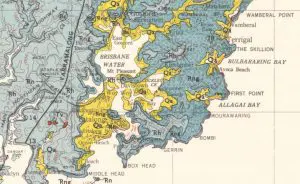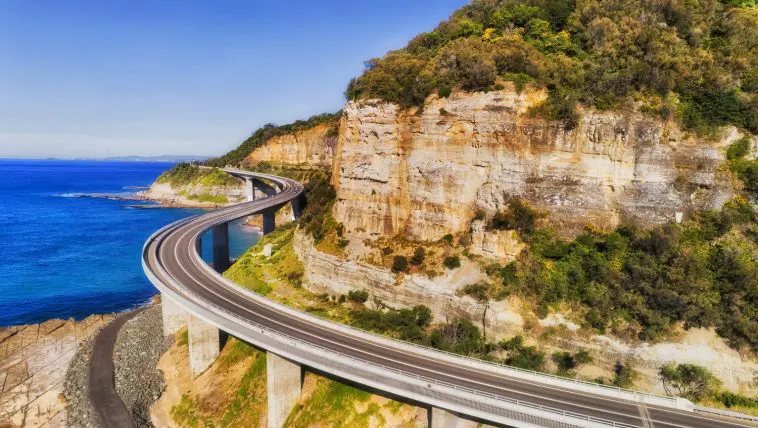[Originally published in January 2014 as City of Gosford, Australia, exhibits fossils buried during Noah’s Flood]
The City of Gosford, 70 km north of Sydney, Australia, is hosting an exhibition of plant and animal fossils typical of species linked to the sandstone formations of the area. The exhibition allows people to see some of the finds from the area that are usually archived in the Australian Museum, some of which have received worldwide recognition. 
The figure shown above is an extract from the geological map of the Sydney area around Gosford. This area is part of the Sydney Basin, which extends from Newcastle in the north, beyond Woolongong in the south to Katoomba in the west.
The darker blue on the above image (TRng) is the Gosford Formation which is at the top of the Narrabeen Group. The lighter blue Hawkesbury Sandstone (TRh) sits on top of that. These have been classified as Triassic. Small red areas (Tv) are basaltic volcanic remnants, likely eroded volcanic plugs. Yellow areas (Qa) are recent, localized sediment deposits.
How These Layers Formed
The Triassic sediments were deposited rapidly during Noah’s Flood as the floodwaters were rising. They display lots of evidence of the huge water flows that were involved in their deposition at that time.
For example, the deep cuts through the sandstone along the freeway between Sydney and Newcastle show sandstone strata, multiple metres thick, with much evidence of fast-flowing water, such as cross beds and rip-up clasts.
Dr. Patrick Conaghan, Senior Lecturer at the School of Earth Sciences at Macquarie University at the time, interpreted the conditions under which the sand was deposited for some of these sediments, describing a wall of water up to 20 m (65 feet) high and 250 km (150 miles) wide coming down from the north at enormous speed.
The rocks of the Gosford area are part of a larger area of geological relationships. They were deposited as part of a series of geological processes that occurred during the biblical Flood, processes that built the eastern side of continental Australia.
[For more about this, see Sydney’s Geological History]






